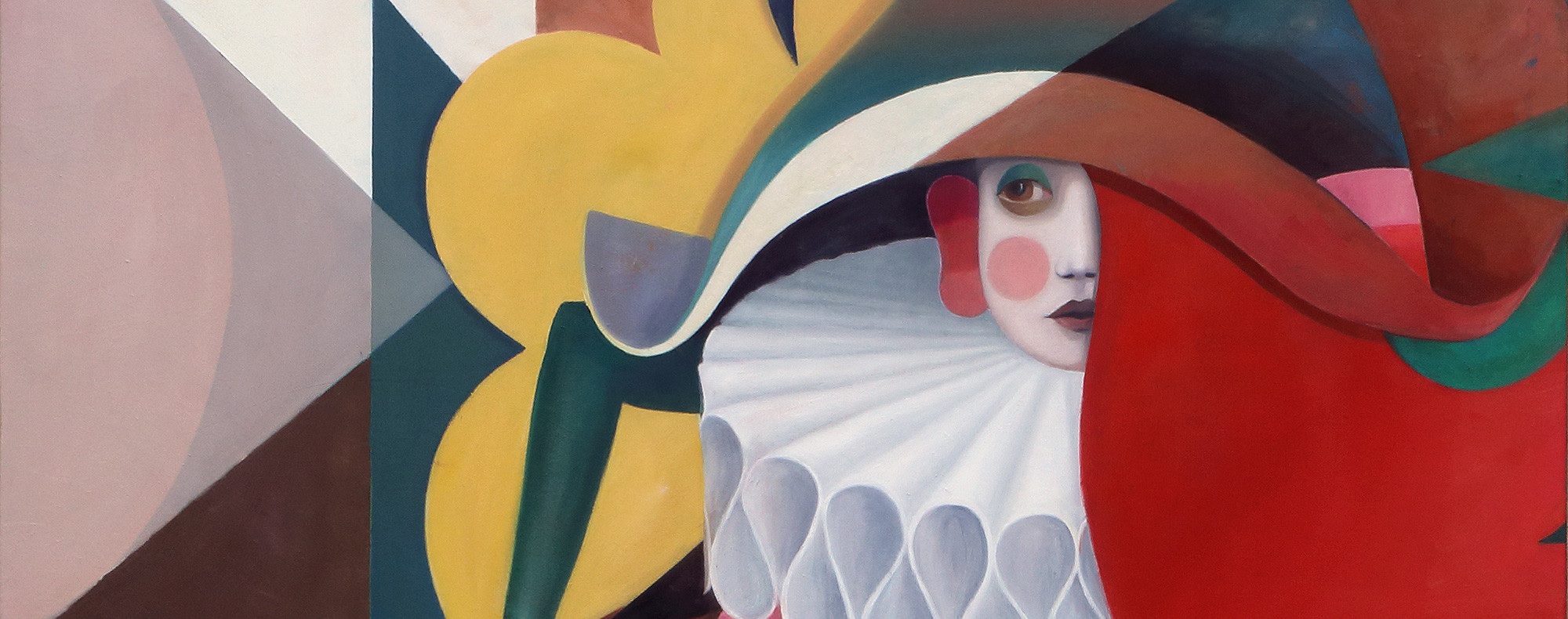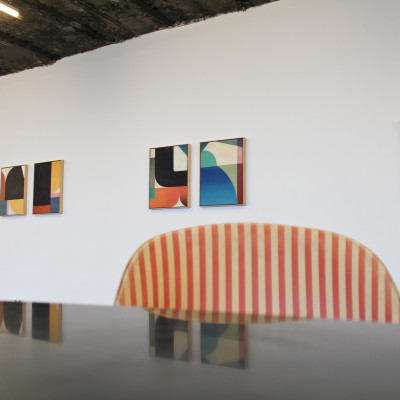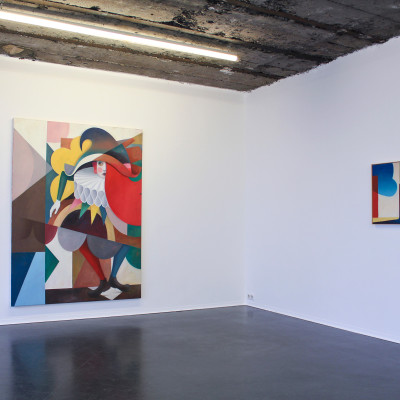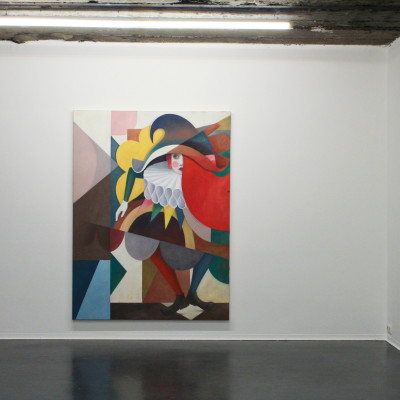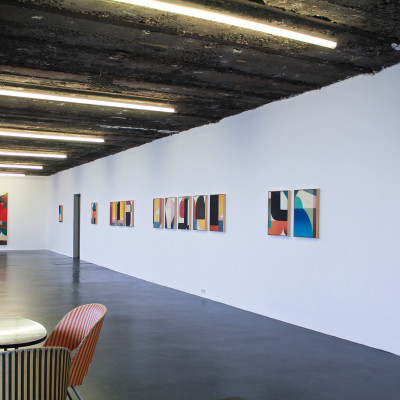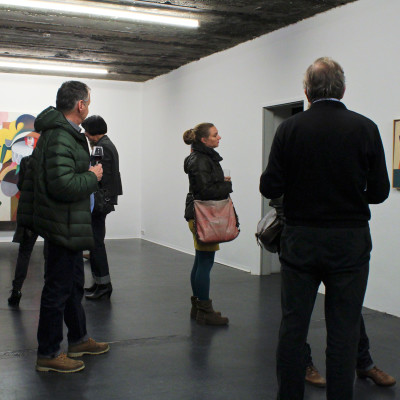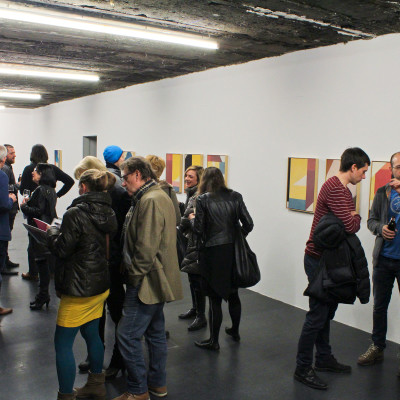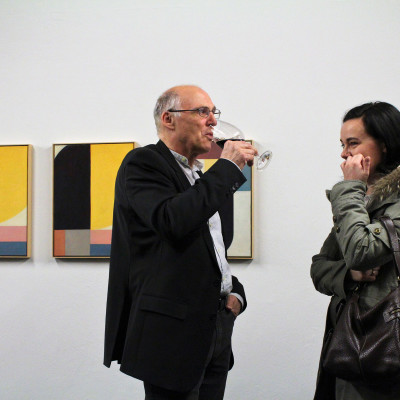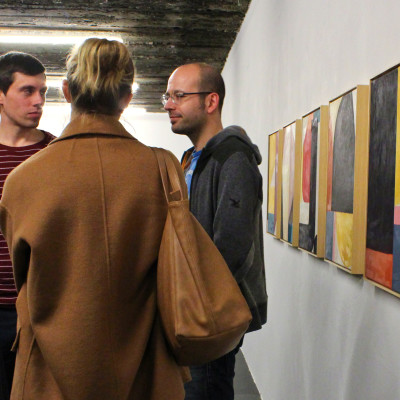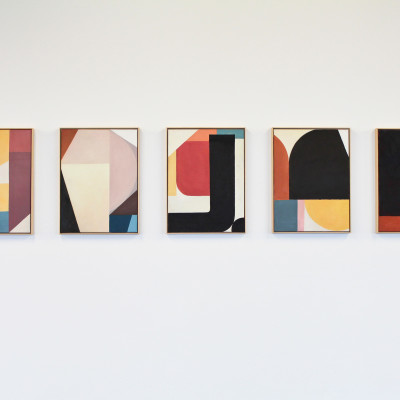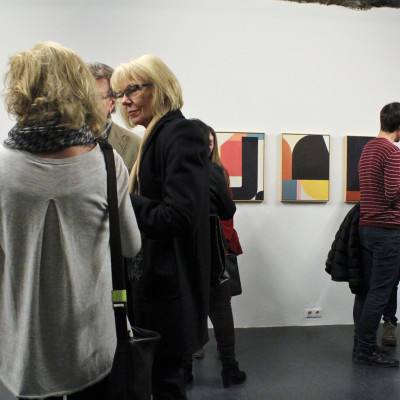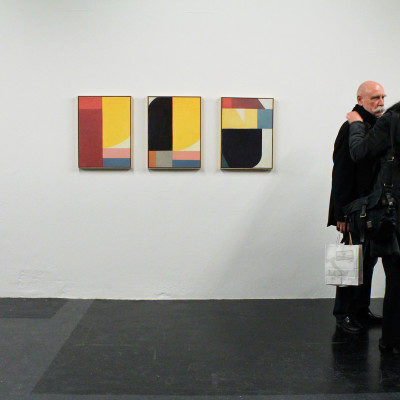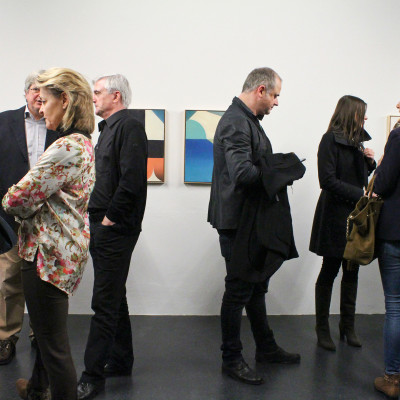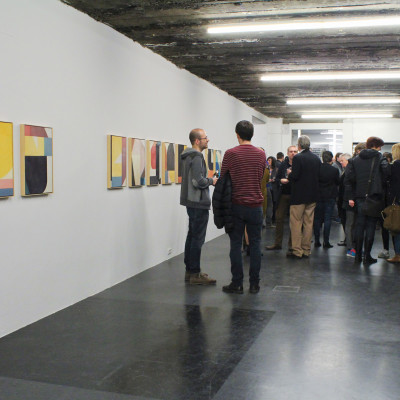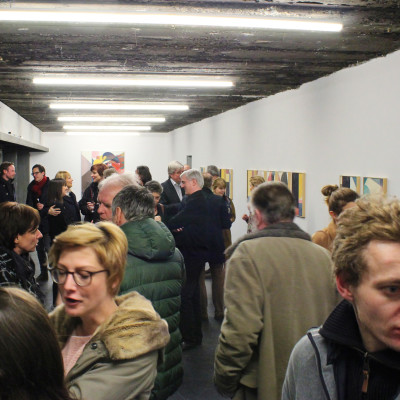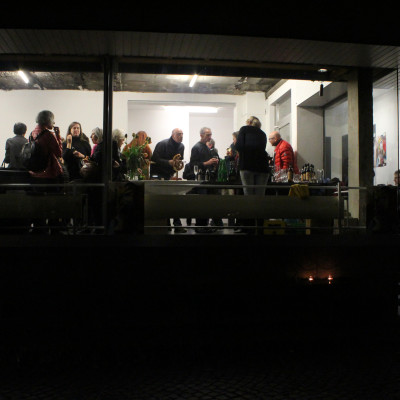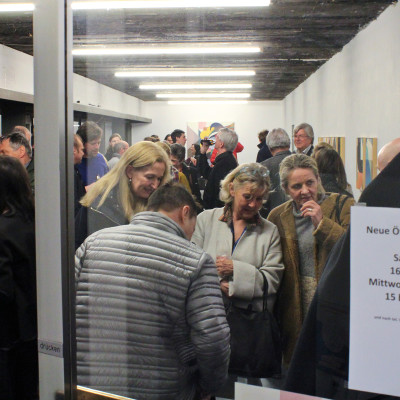13. Februar bis 19. März 2016
Zur Eröffnung der Ausstellung am Freitag, den 12. Februar um 19 Uhr sind Sie und Ihre Freunde herzlichst eingeladen.
Zur Ausstellung spricht:
Dr. Günther Dankl, Kustos der Graphischen Sammlungen und der Modernen Galerie am Tiroler Landesmuseum Ferdinandeum.
Bernhard Buhmann ist anwesend.
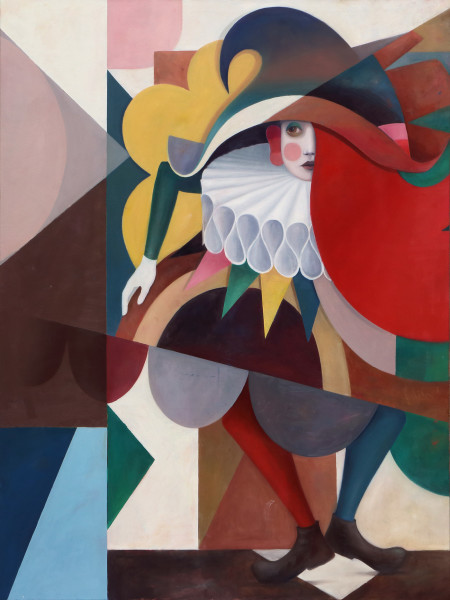
„Fig. 29 (David)“ 200 x 150 cm Öl /Leinwand, 2016 ©Bernhard Buhmann
Im Mittelpunkt der Ausstellung „Gestaltungshysterie“ von Bernhard Buhmann steht eine großformatige Arbeit, in der sich Figuration und Abstraktion die Waage halten und somit zugleich Fragmentierung und Konkretisierung thematisieren.
Die Form bildet den Ausgangspunkt einer kontingenten Konstellation, womit die Figur selbst der beständigen Möglichkeit des Andersseins unterworfen wird. Die Gelegenheit zur Täuschung liegt in der Person selbst, sie agiert als sensibler Spiegel des Alltags. Selbstfindung und Selbstverlust, die Vermischung von Authentischem und Inszeniertem, das Versprechen der individuellen Selbstkonzeption und ihrer Rückwirkungen auf die Lebenswirklichkeit in aller Exaltiertheit und Paradoxie finden in ihr Ausdruck. Die Haltlosigkeit der Umstände und der drohende Kontrollverlust in einer sich rasant verändernden Umgebung evoziert die scheinbare Notwendigkeit zur andauernden Neukonzeption des Selbst.
Die Fragen nach der beständigen Rekonstruktion von Identität unter sich wandelnden Bedingungen, nach den Imperativen der Selbstdarstellung in einer digitalen Kultur und den damit einhergehenden theatralen und inszenierten Routinen sind kennzeichnend für Buhmanns Arbeiten der letzten Jahre, in denen allerlei schrille Protagonisten menschlicher wie auch tierischer und maschineller Gestalt ihren Auftritt hatten.
In einer Gegenwart, in der die Beherrschung der Oberfläche zur Schlüsselkompetenz avanciert und Klicks auf ’soziale’ Interfaces als Äquivalenzen authentischer Nähe erfahren werden, repräsentieren die wechselnden Identitäten einen gesellschaftlichen Funktionsmodus, welcher etwa in der Forderung nach uneingeschränkter Flexibilität seinen Ausdruck findet. Das Karussell dreht sich und mit zunehmender Geschwindigkeit verkehrt sich das Ideal nach individueller Selbstverwirklichung mitunter rasch in panische Gesten der eigenen Anpassungsfähigkeit. Die Gestaltungshysterie ergreift das Individuum selbst. Dem Protagonisten im Hauptbild der Ausstellung rücken die eigene Möglichkeiten zu leibe, sie drängen ihn gerade zu aus dem Bild. Daneben sind 12 Mittelformate zu sehen, die den Faden weiterspinnen und die Form als Grundprinzip des Andersseins, der Veränderung in den Mittelpunkt rücken. Es bleibt kein Stein auf dem anderen.
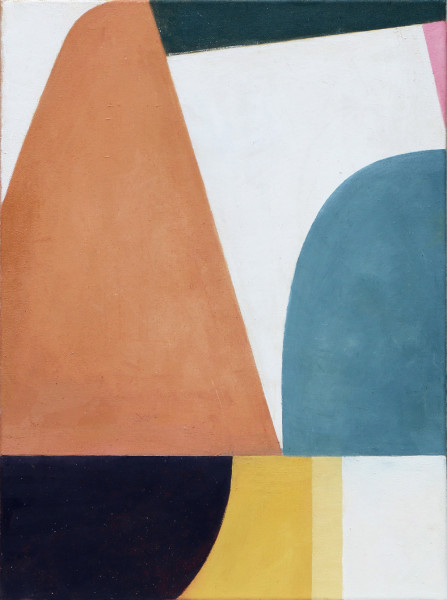
o.T., 57 x 42 cm, Öl/Leinwand, 2015 © Bernhard Buhmann
At the center of Bernhard Buhmann’s exhibition “Creative Hysteria” is a large-format work in which figuration and abstraction balance each other out, thus addressing both fragmentation and specification.
The form is the starting point of a contingent constellation whereby the figure itself is subjected to the constant possibility of otherness. The opportunity for deception lies in the person who acts as a sensitive mirror of the everyday world. Self-discovery and self-loss, the commingling of the authentic and the staged, the promise of an individual concept of the self and its repercussions for the reality of life in all its excitement and paradox find expression there. The instability of circumstances and the threatening loss of control in rapidly changing surroundings evoke the apparent need for constant reconception of the self.
Questions regarding the consistent reconstruction of identity under changing circumstances, the imperatives of self-expression in a digital culture and the theatrical and staged routines which are a consequence thereof are characteristic for Buhmann’s recent work in which all sorts of shrill protagonists in human, animal and mechanical form have made their appearance.
In a present in which mastery of the surface has advanced to the position of a key competence and clicks on “social” interfaces are experienced as equivalent to authentic closeness, changing identities represent a social function mode which finds expression, for example, in the demand for unrestricted flexibility. The carousel turns, and, ever more rapidly, the ideal of individual fulfilment occasionally turns into panicky gestures of one’s own adaptability. Creative hysteria captures the individual himself. Individual possibilities attack the protagonist in the central painting; they virtually push him out of the picture. Also to be seen are 12 medium-formats which spin the thread further and which focus on form as a fundamental principle of otherness and change. No stone remains unturned.
